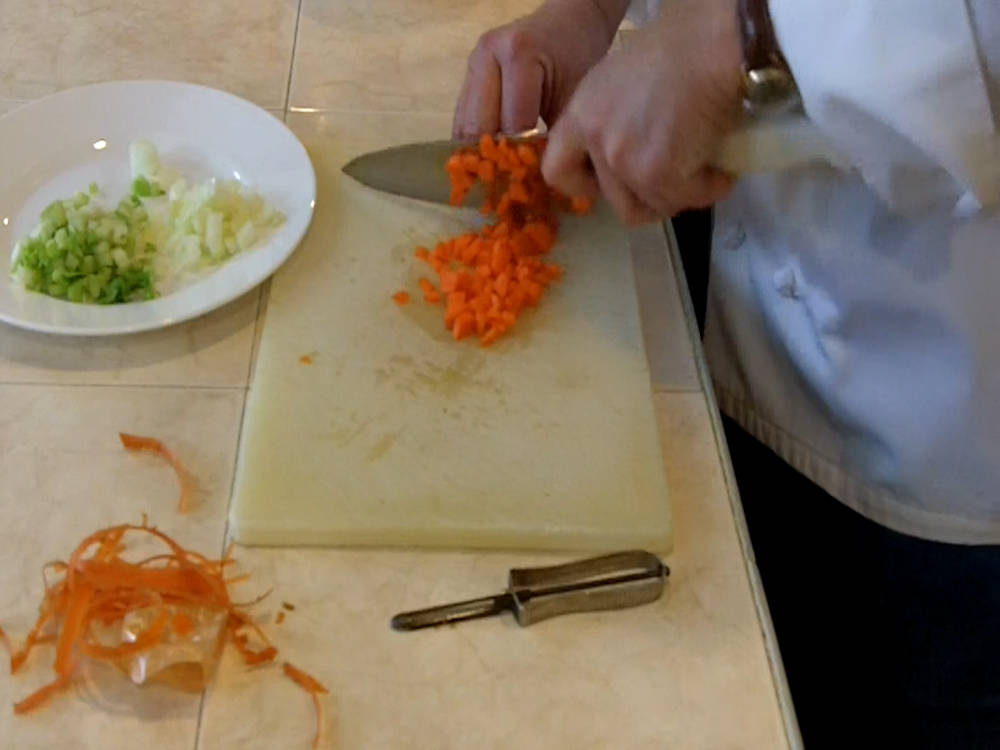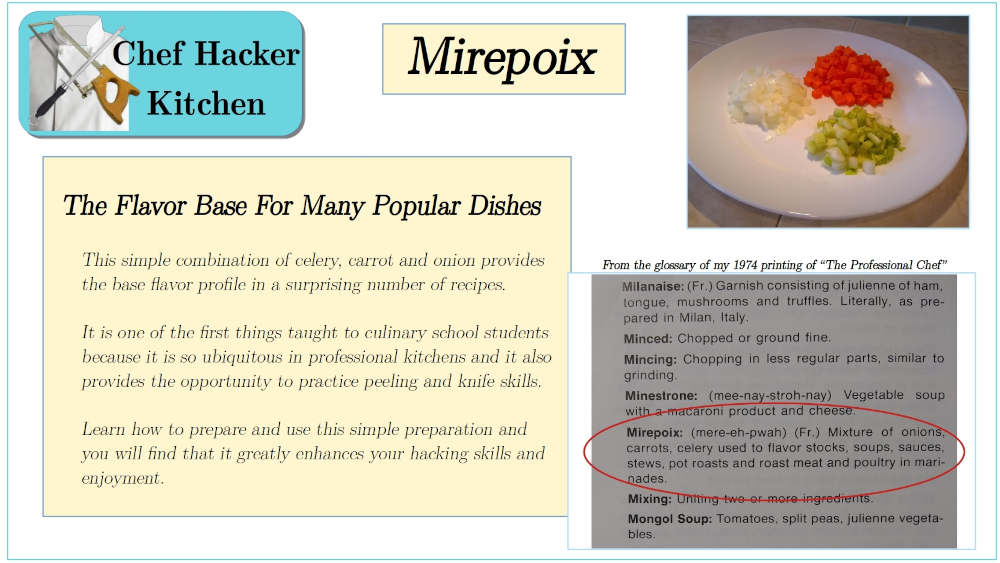A lot of cooking is elemental. That is, finished dishes are often made by taking ingredients that have already been prepared and combining them with additional ingredients or preparations. One simplest of examples is Spaghetti and Meatballs. Perhaps you would first mix, roll and fry the meatballs. Next you might cook the tomato sauce. After that you boil the pasta. Then to serve you could add the meatballs to the sauce, return it to a simmer and then use it to top the pasta. Three elements combine to make a single dish.
Mirepoix: A Key Element in Western Cooking
The preparation of this simple combination of celery, carrot and onion is so basic and used in so many dishes that it is one of the first things learned by culinary students. In addition to being so ubiquitous in professional kitchens, learning to prepare it also helps students develop peeling and knife skills. These things alone justify studying mirepoix as an initial step in learning the culinary arts. Even more importantly, I think, is experiencing the fragrance and tastes that result in using mirepoix and learning how it impacts recipes across courses and cultures.

To make a mirepoix clean and dice equal parts of celery carrot and onion as part of the mise en place for a recipe. I bet you have done this many times without even thinking about it.
Mirepoix is typically sauteed as the initial cooking step in soups, side dishes and entrees.
The combination of fats selected and different levels of caramelization and doneness can provide surprisingly stark differences in flavors and textures and these things end up having strong impact on the final dish.
I sometimes add uncooked mirepoix to certain chicken based soups just a few minutes prior to the end of the cooking period when I’m looking to get a clean, clear and light taste. I especially like to use this method when I plan to finish the soup with the addition of lemon juice. Try it!

As always, you are welcome to share your thoughts in the “Comments” section below. We would love to know what you think!


